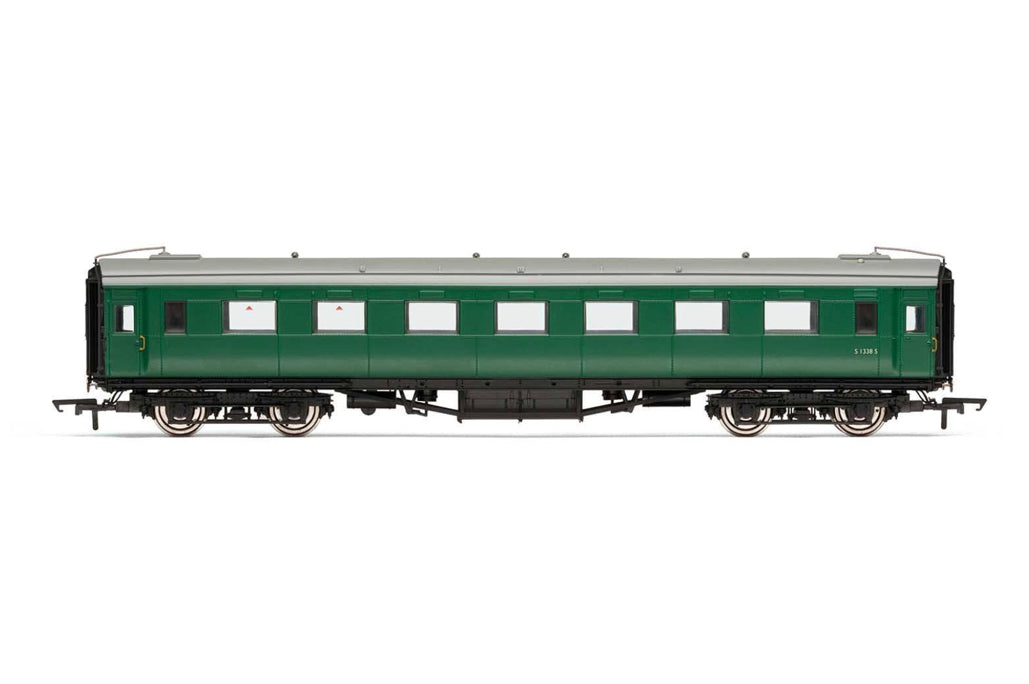You need to choose options for product.
-
 files/Screenshot2024-01-27at11.28.33.jpg
files/Screenshot2024-01-27at11.28.33.jpg
Southern Railway inherited a variety of coach stock that had been used by other railway companies pre-grouping. Furthermore, Southern Railway continued to build new coaches to the design of the three largest companies. The Maunsell carriage was intended to be the standard carriage design for use across the Southern Railway lines, incorporating the best features of each of the former companies' designs.
Maunsell Coaches were constructed between 1925 and 1936 at Eastleigh, with 1200 being built. The standard coach design was 59ft long and made from wood with steel sheeting. One feature of the coaches was the low window placement which while less of an issue when seated, meant that whilst stood up it was difficult to see outside the coach without ducking. In 1929 this feature was amended, resulting in the introduction of 'high window' coaches, although on corridor coaches the low windows remained on the compartment side of the coach.
In operation, coaches were grouper together to form sets. The intention was that coaches would remain in these sets for long durations, with the set numbers appearing at the brake end of the set. 139 sets were created with loose stock being used to supplement the sets on busier trains.
Southern Railway inherited a variety of coach stock that had been used by other railway companies pre-grouping. Furthermore, Southern Railway continued to build new coaches to the design of the three largest companies. The Maunsell carriage was intended to be the standard carriage design for use across the Southern Railway lines, incorporating the best features of each of the former companies' designs.
Maunsell Coaches were constructed between 1925 and 1936 at Eastleigh, with 1200 being built. The standard coach design was 59ft long and made from wood with steel sheeting. One feature of the coaches was the low window placement which while less of an issue when seated, meant that whilst stood up it was difficult to see outside the coach without ducking. In 1929 this feature was amended, resulting in the introduction of 'high window' coaches, although on corridor coaches the low windows remained on the compartment side of the coach.
In operation, coaches were grouper together to form sets. The intention was that coaches would remain in these sets for long durations, with the set numbers appearing at the brake end of the set. 139 sets were created with loose stock being used to supplement the sets on busier trains.
Flexible payment terms now available through Clearpay, Klarna and PayPal. Just select your desired payment method at the checkout stage.
Couldn't load pickup availability
Share


